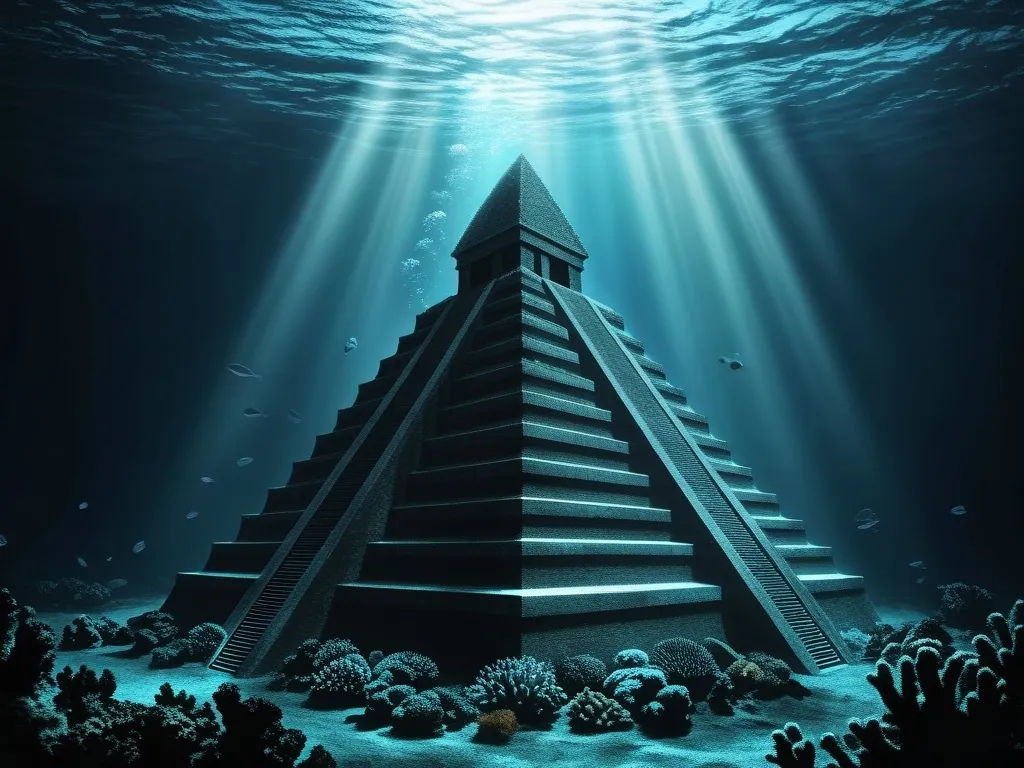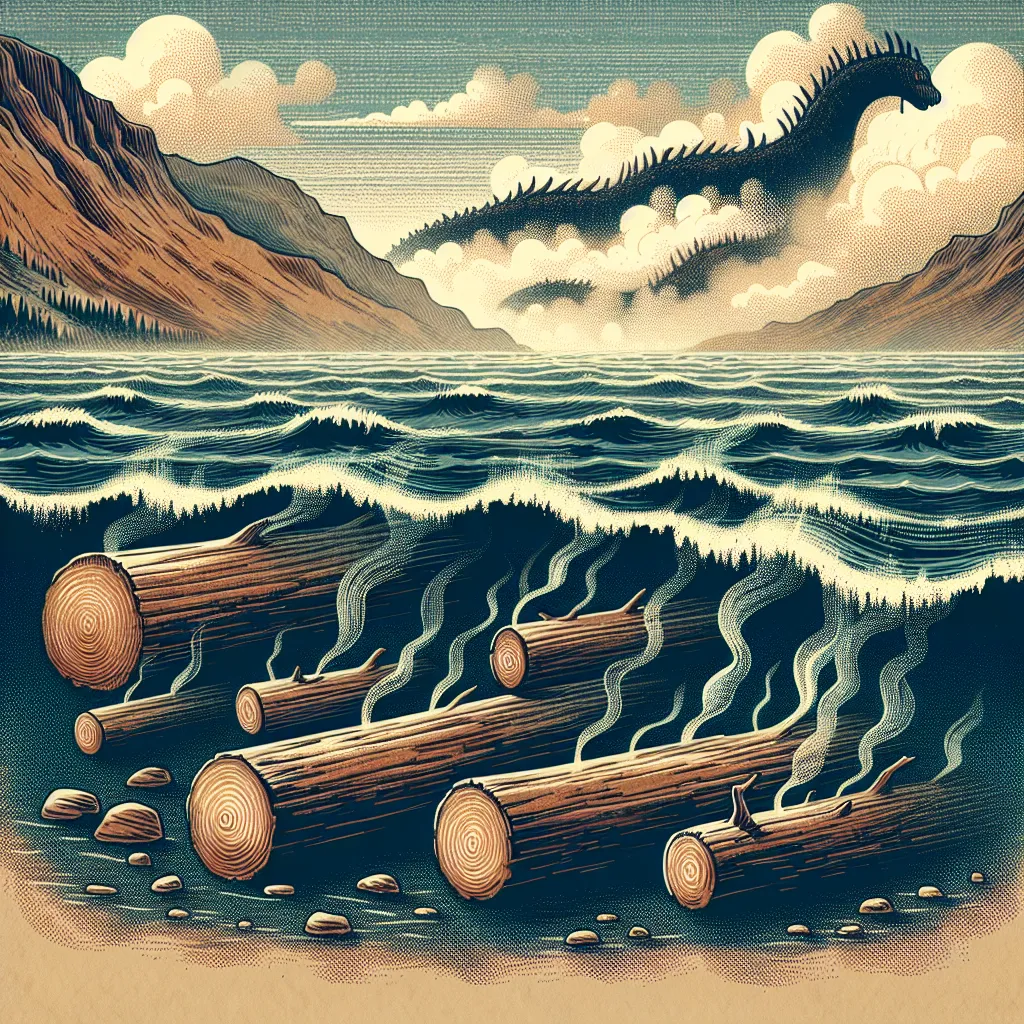As I delve into the mysteries of the ocean floor, I find myself entangled in a web of intrigue and speculation surrounding the so-called “underwater pyramids.” These enigmatic structures, scattered across the globe, have sparked intense debates and wild imaginations. Are they remnants of lost civilizations, or merely the ocean’s artistic expressions through geological processes?
One of the most fascinating cases is the pyramid structure discovered off the coast of the Azores Islands. In 2013, Diocleciano Silva, while surveying ocean depths, stumbled upon a perfectly shaped and oriented pyramid. Located between the islands of Terceira and São Miguel, this underwater formation is estimated to be 60 meters high with a base of 8,000 square meters. The precision of its shape and alignment with the cardinal points have led many to speculate about its origins.
Some enthusiasts believe this could be evidence of an ancient civilization, perhaps even the fabled city of Atlantis. However, the timeline poses a significant challenge to this theory. The area where the pyramid was found has been submerged for around 20,000 years, a period long before the emergence of the earliest known advanced human civilizations in Mesopotamia around 3,000 BC. This discrepancy makes it highly unlikely that humans were responsible for its construction.
The Portuguese navy offers a more grounded explanation, suggesting that Silva might have encountered D. João de Castro Bank, an underwater volcano known for its unique geological formations. The Azores region is prone to volcanic activity and tectonic shifts, which could easily create such structures naturally. Despite the allure of an underwater pyramid, the current evidence leans towards a natural origin.
Another intriguing example is the underwater formation found off the coast of Yonaguni Island in Japan. Discovered in 1987 by local diver Kihachiro Aratake, this structure is composed of what appear to be spiral steps and measures 164 feet long and 65 feet wide. The scientific community is divided on whether this is a man-made or natural formation. Professor Masaaki Kimura from Ryukyu University, who led the research, believes it is very difficult to explain the structure’s origins as purely natural, given its flat surfaces and symmetrical shapes.
Diver Kenzo Watanabe, who also explored the site, is convinced that the structure is not natural. He describes the experience of seeing the formation as overwhelming, with many different surfaces and symmetrical shapes that he believes could not have been shaped by the ocean alone. However, the lack of conclusive evidence means that this debate remains unresolved.
These underwater discoveries often blur the line between myth and reality, fueling both scientific curiosity and public imagination. The Azores Islands, for instance, have a controversial alternative theory suggesting that they were inhabited by humans thousands of years ago. Rock art and remnants of human-made structures on the islands have sparked a debate about ancient settlements. While some experts argue for the presence of a Stone Age civilization, official investigations have concluded that these structures are either natural rock formations or of more modern origin.
The allure of underwater pyramids also taps into our collective fascination with lost civilizations and the mysteries of the deep. It’s a narrative that has captivated us for centuries, from Plato’s tales of Atlantis to modern-day speculations about submerged cities. However, it’s crucial to approach these findings with a balanced perspective, considering both the scientific evidence and the natural processes that shape our planet.
As we continue to explore the ocean floor, advanced technologies like sonar scans and underwater expeditions are helping us uncover more about these enigmatic structures. Yet, each new discovery raises more questions than answers. Could these formations hold secrets to forgotten eras, or are they simply the ocean’s way of creating intriguing landscapes?
The ocean, with its vast and largely unexplored depths, remains one of the greatest mysteries of our time. As we dive deeper into its secrets, we are reminded of the delicate balance between scientific inquiry and the human tendency to weave stories around the unknown. Whether these underwater pyramids are the remnants of lost civilizations or the ocean’s natural artistry, they undoubtedly inspire us to continue exploring, to keep questioning, and to marvel at the wonders that lie beneath the waves.
In the end, the search for answers about these underwater structures is a journey that takes us to the heart of human curiosity. It’s a quest that challenges our understanding of history, geology, and the boundless mysteries of the ocean. As we continue to unravel these aquatic enigmas, we are not just seeking to understand the past; we are also exploring the depths of our own imagination and the infinite possibilities that lie beneath the surface of our planet.






